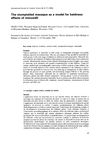The Use of Minoxidil in the Treatment of Male and Female Androgenetic Alopecia: A Story of More Than 30 Years
January 2018
in “
Italian journal of dermatology and venereology
”
TLDR Minoxidil effectively stimulates hair growth in androgenetic alopecia.
Minoxidil had been used for over 30 years as a hair growth stimulator, although its precise mechanism was not fully understood. It was known to shorten the telogen phase, accelerate the telogen-exogen phase, and induce premature entry of resting hair follicles into the anagen phase, while also increasing hair follicle size. Scientific literature confirmed the efficacy of topically applied minoxidil in humans, with patients showing a significant increase in non-vellus hair count. Minoxidil formulations with low concentrations of propylene glycol were developed for better cosmetic acceptance and dermatological safety. Overall, minoxidil remained a key treatment for androgenetic alopecia.






